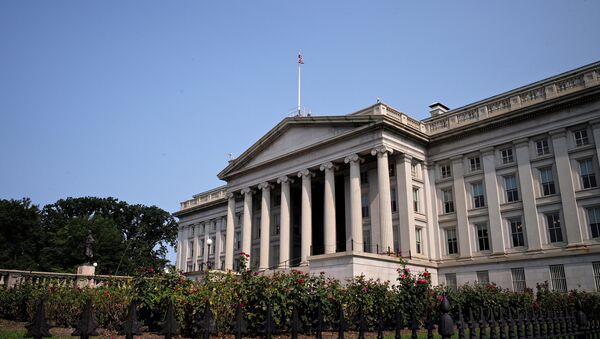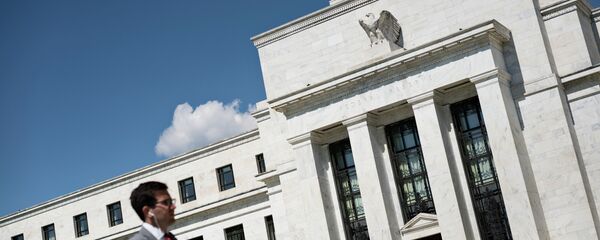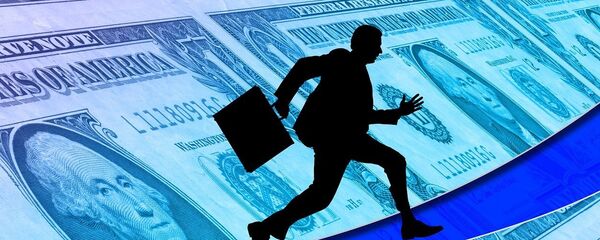While some market participants and observers consider the yield curve compression as a sign of nearing recession, lower profitability of bond market investment drives capital into stocks.
When slower economic growth projections and the overheating stock market coincide at a point in time, the threat of asset bubbles emerge. One of the prominent examples in the past when stocks went too far above the real economy was in 1999, just before the tech, or dotcom, bubble, the burst of which greatly impaired the US economy and laid the cornerstone of the wage stagnation, still relevant today.
Over the past 18 months, the US Fed hiked rates four times due to broader policy considerations and modest improvements in the US labour market and inflation. However, the profitability of bond market investment, as indicated by the Treasury yield curve dynamics, has not improved since December 2015, and has actually decreased compared to December 2016.
Currently, the discrepancy between short- and long-term US governmental bond yields stands at 2.1637 percent. In December 2015, the yield curve was at the same level, at 2.1618 percent. Having declined significantly during the US presidential race throughout 2016 amidst fears of an imminent recession entailing the election of a Democrat candidate, the yield curve skyrocketed after Donald Trump’s election in November, hitting its two-and-a-half-year highest at 2.5916 percent in December 2016.
However, as partisan politics in Washington prevented the new administration from taking urgent and decisive economic reforms from day one, the decline of the yield curve reflected the overall decline in market sentiment and its perception of the Trump administration as able to deliver quick and efficient solutions in improving the economy.
Currently, the expectations are the yield curve will likely flatten further down to 2 percent, rather than increase to 3 percent. A flatter yield curve in an indication of recessionary dynamics in the economy as it reflects the higher investor demand for longer-term (30-year) governmental bonds for safe haven purposes, and a low demand for short-term (12-month) bonds for the purposes of taking profit.
The flatter yield curve also happens to coincide with weaker US inflation and consumption figures in the recent months. However, with the stock market setting new record highs relentlessly, there is more grounds for murkier forward-looking projections in regard to the broader US economy. US stock market is outperforming the economic expansion, and asset bubbles are deemed to be a likelier possibility.
"The tech industry is booming, unemployment is low, consumer and business confidence are high, and investors are very complacent," Brad McMillan of Waltham, MA-based Commonwealth Financial Network wrote. "Now, 1999 was a good year, just as 2017 is shaping up to be a good year. With the wisdom of hindsight, though, we know that even as things were great, the seeds of the next downturn were already growing."
Overextension in stocks might not be the only issue. In the debt market, both auto loans and student debt, market segments worth roughly $1-trlillion and $1.3-trillion respectively, are looking increasingly toxic due to the rising delinquencies and increasing share of non-performing loans (NPLs). Optimistic labour market statistics hardly add any optimism in this regard – an increasing number of people are unable to service their debt obligations despite the low jobless rate.
For instance, the 1.35-percent flat yield curve in July 2016 suggested a recession would hit the US within the following 6-12 months, but then Donald Trump got elected, which provided a major boost to US investor and consumer sentiment. The shock effect of Trump’s election passed on to the GDP growth, allowing the economy to maintain the above-zero pace of expansion in the traditionally depressive first quarter of the year.
This means that as market participants are becoming increasingly disenchanted with the White House’s lack of progress on economic reform, future Fed rate hikes (there is at least one more planned for this year) will further compress the yield curve, bringing the recession closer.
This recession might start with either a stock market crash, a car loan market meltdown, or student debt market collapse, unless the administration is able to timely deliver fiscal policy measures and other aspects of the economic reform, including an across-the-board deregulation, including in the banking sector, and construction.




